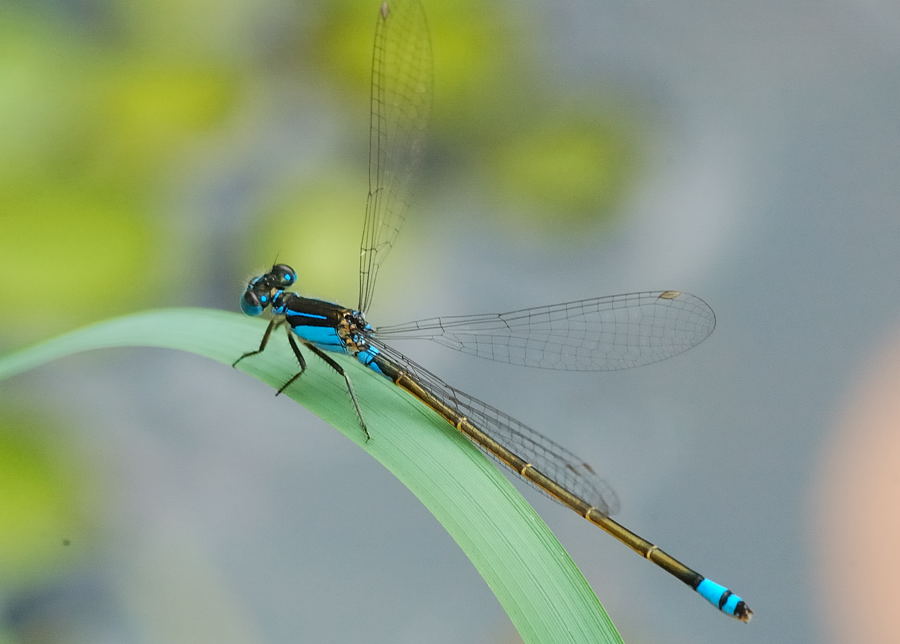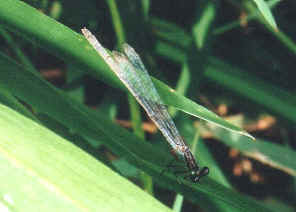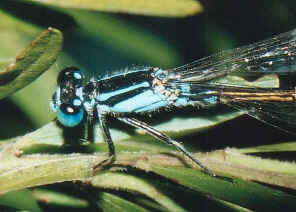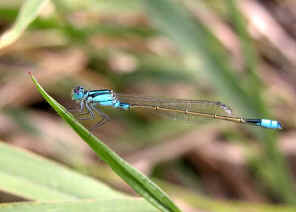|
| |
FAMILY COENAGRIONIDAE
- This page contains information and pictures about Common Bluetail
Damselflies that we found in the Brisbane area, Queensland, Australia.
-
 - Male, body length 34mm
-
- Common Bluetail
Damselflies are one of the most common damselflies found in Brisbane waters.
They prefer slow-running or still waters. For the male, the
head and thorax are black and blue, the abdomen is black in colour. There is the blue tip at the end of abdomen.
-
Female

 - Female, body length 34mm
-
- The female are the
same size, with pale blue to grayish-green in colour. They usually rest on
the plants either in the middle of ponds or at the water edges.
-

 -
- Because the females are in dull colours, when they rest on plants, they are
hardly be seen.
-
- The pictures in this
page are mostly taken at Wishart along Bulimba Creek. The damselfly can be seen
even in winter in Brisbane, in a sunny day.
-
Male

 -
- The male damselfly is brightly blue in colour with black
abdomen. Notice the thick black strip on its thorax back and the blue dots
on the top of its eyes.
-

 -
- Quite a number of species of damselflies found in Brisbane are in blue colour
and look similar. Our Australian Dragonfly Society President, Deniss Reeves, advised
that we can tell it is a Common Bluetail Damselfly by less blue on its eyes, and
with more back on its back. The other blue damselfly species, the Blue
Riverdamsel has more blue on its back and the Eastern
Billabongfly is smaller in size.
-

 -
Non-mature Male

 -
- We found this damselflies become active in late winter, September in
Brisbane.
-
 -
- When Common Bluetail
Damselflies are at rest, they held their wings closely folded
up vertically over their thorax.
-
Mating

 -
- Common Bluetail
Damselflies mating in wheel position. Most details about damselfly reproduction
please check this page.
-
Wings
 - Wings of Common Bluetail Damselfly
- Reference:
- 1. The Australian Dragonflies - CSIRO, Watson, Theisinger &
Abbey,1991, p132.
- 2. A
Field Guide to Dragonflies of South East Queensland - Ric Nattrass,
2006, p36.
- 3. The
Complete Field Guide to Dragonflies of Australia - CSIRO, GŁnther
Theischinger and John Hawking, 2006, p96.
Back to Top
| |
|

















